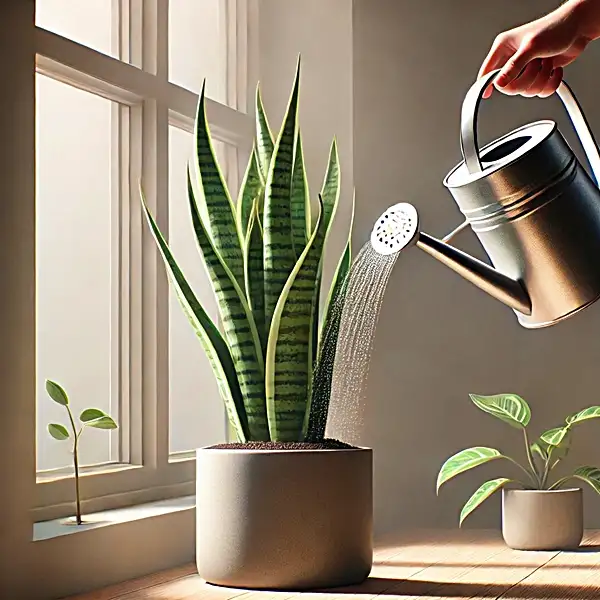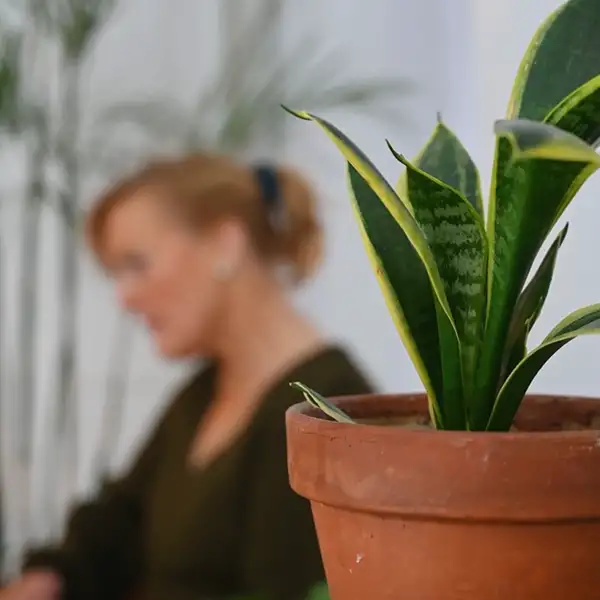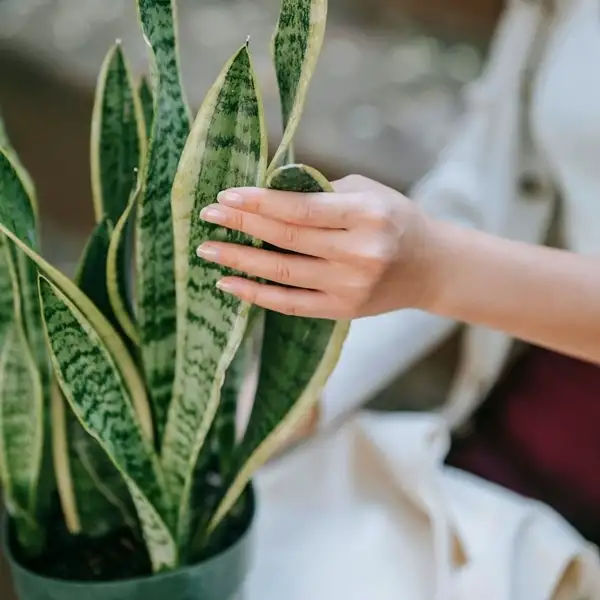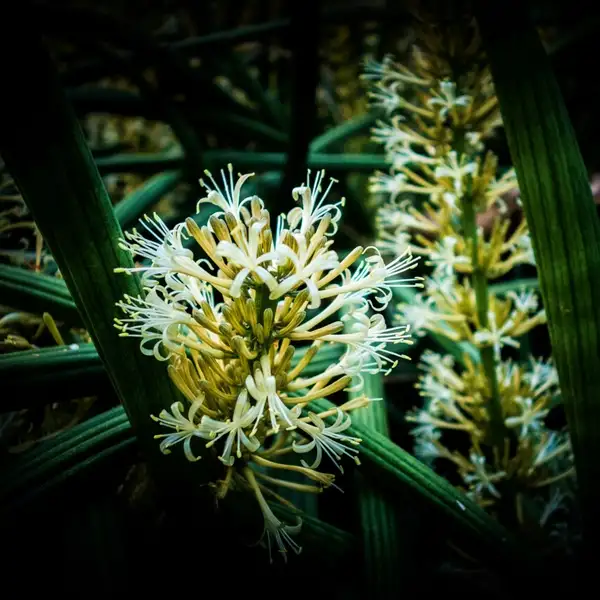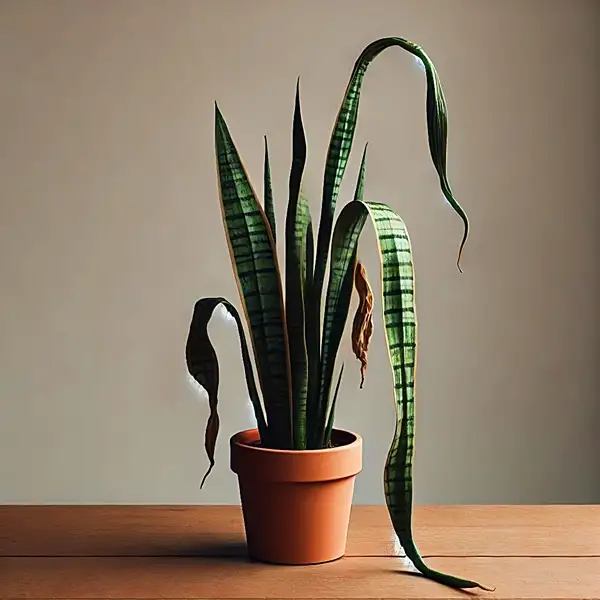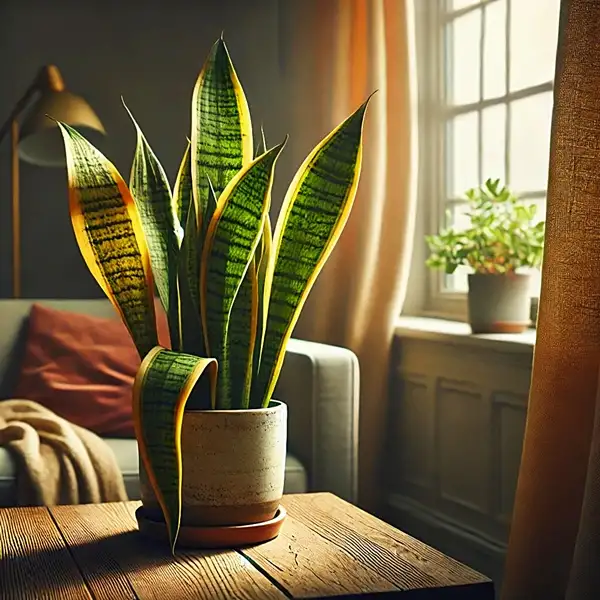Key Takeaways
| Key Takeaways | Why It Matters |
|---|---|
| Discover the unique nature of snake plants | Understand why they need a different approach compared to other houseplants |
| Find the perfect watering schedule | How to water a snake plant? Learn how timing and frequency impact plant health |
| Master the best watering technique | Avoid common mistakes that could lead to serious plant issues |
| Recognize signs of overwatering | Spot the symptoms before they turn into major problems |
| Learn how to revive a struggling plant | Get step-by-step guidance on bringing your plant back to life |
| Pro tips for moisture balance | Maintain a healthy, thriving plant effortlessly |
Unique Nature of Snake Plants
Years ago, I inherited a struggling snake plant from a neighbor who had nearly given up on it. The leaves were yellow, drooping, and soft to the touch—a textbook case of overwatering. I decided to take on the challenge, relying on my years of experience caring for indoor plants. After some trial and error, I learned that the secret lies in understanding how to water a snake plant correctly.
Within weeks, that same plant began to thrive, and it’s now one of the most striking features in my living room. This journey taught me not just the importance of proper care but how even resilient plants like the snake plant can falter without the right watering practices.
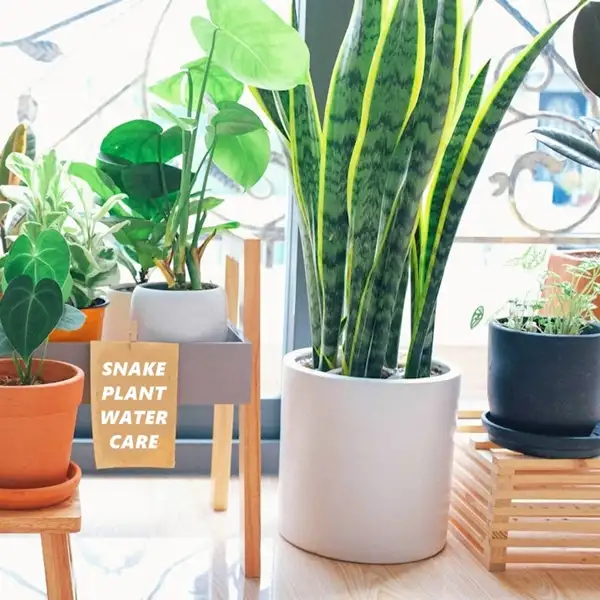
Snake plant scientifically known as Sansevieria trifasciata remains popular in many homes due to its striking appearance & minimal maintenance requirements. Also known as mother-in-law’s tongue, this drought-tolerant species is native to West Africa’s tropical rainforests where it adapted to survive under limited light & water conditions. Therefore, understanding this plant’s unique nature is integral for optimal care.
- This hardy plant has thick leaves that can store significant amounts of water – an evolutionary adaptation allowing survival during dry spells.
- The roots also act as water storage spots thus enabling prolonged periods without hydration.
- According to Bailey (1992),
‘Ability of snake plants to tolerate low light levels while still keeping their shape with well-developed foliage makes them perfect indoor plants.’
However, while they are resilient against negligence in watering schedules or light access, snake plants need attention when it comes to their root health. Excessive moisture promotes root rot – a major threat that could potentially kill your precious green resident.
Ideal Watering Schedule for Snake Plants
Ascertaining the ideal watering schedule for any houseplant can be tricky and may involve some trial-and-error phases before finding equilibrium between overhydration and dehydration; however, for snake plants leaning towards underwatering often proves safer.
Generally speaking, adult snake plants exposed to average indoor conditions should be irrigated every 2-6 weeks depending on temperature variations and lighting exposure levels. During hot summer periods, an increase in watering frequency might be needed whereas winter calls for reduced irrigation.
Experts at Longwood Gardens assert saying –
“Less frequent watering fosters more robust root systems resulting in overall healthier Sansevieria.”
Thus emphasizing upon adapting according to seasons becomes crucial for healthy growth.
It is worth noting that young or newly propagated cuttings tend to require more frequent watering than mature ones. As always, discernment is key – observe & understand your plant’s unique requirements.
Seasonal Watering Guide for Snake Plants
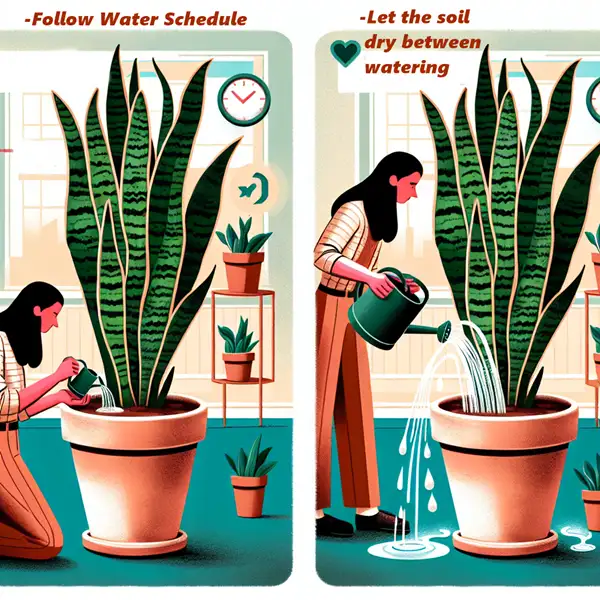
The amount of water a snake plant needs varies by season due to changes in temperature, humidity, and light. Here’s a guide tailored for each season –
| Season | Frequency | Amount | Tip |
|---|---|---|---|
| Spring |
|
|
|
| Summer |
|
|
|
| Autumn |
|
|
|
| Winter |
|
|
|
(The Right Technique) How to Properly Water a Snake Plant
Proper watering technique significantly affects the health of your snake plant. Remember that this species prefers dry soil between watering sessions; hence, letting the soil fully dry out should be your key determinant for when to water next.
Soak and Dry Method
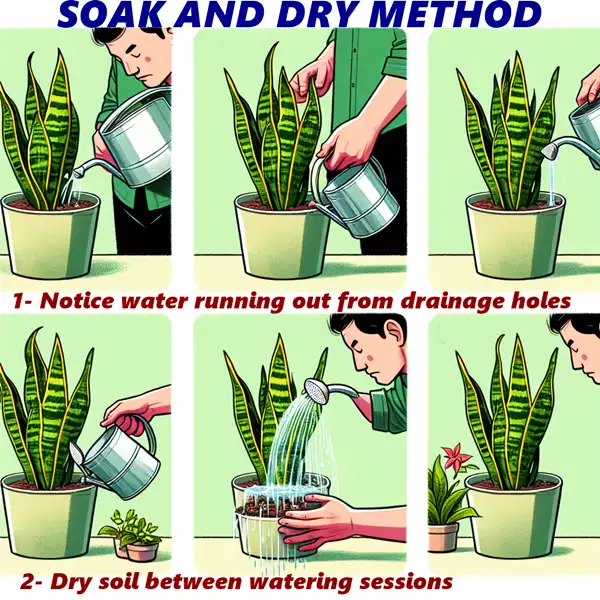
- To ensure neither over nor under-watering takes place, follow a simple ‘soak and dry’ method. Knowing how to water a snake plant with this technique mimics its natural environment and keeps its soil and roots in prime condition.
- Drench the potting mix till you notice water running out from drainage holes at the bottom of the pot then wait until the soil grooms absolutely dry before repeating: akin to natural conditions experienced by this species in its native land.
In line with views from The Royal Horticultural Society (RHS),
“Most houseplants prefer being kept on the drier side rather than having constantly damp roots.”
Hence on top of adhering to the right watering schedule, practicing the correct technique undoubtedly becomes an integral step toward acquiring a healthy snake plant.
6 Signs of Overwatering in a Snake Plant
Despite their resilient nature, snake plants are not immune to signs of mistreatment primarily caused due to overwatering – something fairly common among new gardeners –
| Symptom | Description |
|---|---|
| Yellowing Leaves | Leaves develop a yellow hue, often becoming soft and mushy, indicating excess water retention |
| Soft, Mushy Leaves | Overwatered leaves feel soft, soggy & may wrinkle due to waterlogged tissues |
| Drooping Leaves | Leaves begin to droop or bend which can result from overwatering, high temperatures or insufficient light |
| Root Rot | Roots appear black or brown, feel soft & emit a foul odor, often leading to plant death if not addressed promptly |
| Moldy or White Soil | Presence of mold or white fungal growth on soil surface, indicating consistently moist conditions favorable for fungal development |
| Fungus Gnats | Small flies hovering around plant, attracted to consistently moist environment caused by overwatering |
How To Revive an Overwatered Snake Plant

In case you’ve subjected your fellow green friend to an excessive shower, leading it to suffer from root rot, early detection increases its chances of recovery! Here’s how you can salvage the situation:
- Firstly remove decaying parts using sterile pruning sheers and immediately halt any further watering for some days.
- Next place the plant into a new, dry potting mix preferably with ample perlite content to enhance draining attributes. For a snake plant, an ideal potting mix should contain around 20-50% perlite, depending on the base soil’s texture and drainage properties. This helps prevent water retention, reducing the risk of root rot.
- In severe cases dissembling whole root ball could be necessary to get rid of any decaying roots before reporting.
But remember practicing patience is necessary as recovery can take a considerable time span & results might not be visible straight away!
3 Expert Tips To Maintain the Perfect Moisture Balance
Quality of Water
Beyond correct quantity, providing the right quality of water matters equally when it comes to caring for your snake plant: distilled or rainwater is more favored over hard tap water due to its potential chlorine or mineral contents.
Placement
Placement also plays a crucial role. Positioning your snake plants in areas with proper ventilation aids in reducing remaining moisture levels, and avoiding rooms prone to high humidity, such as bathrooms or kitchens, is important too.
1 Golden Tip For Snake Plant Owners
An old but golden tip shared by The RHS is –
“To always err on the side of underwatering rather than overwatering”.
Hence learning to control moisture balance through this approach becomes an ultimate key towards successfully maintaining these stunning low-maintenance stunners!
Frequently Asked Questions
How do you pour water in a snake plant?
Pour water gently around base until soil is fully saturated letting excess drain out. Never let plant sit in standing water. Use soak-and-dry method for healthy roots.
How do I know if my snake plant is overwatered?
Check the 6 signs mentioned in detailed guide above. Look for drooping, yellowing or mushy leaves with a foul smell - signs of root rot.
How to tell if a snake plant needs water/ underwatered?
Check if soil is bone dry at least 2 inches deep. Limp or wrinkled leaves also indicate thirst. Always let soil dry completely between 2 waterings.


